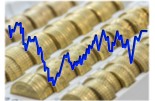Aberdeen Investments: Smarter diversification with small caps - three reasons to get started now
Aberdeen Investments: Smarter diversification with small caps - three reasons to get started now

This interview was originally written in Dutch. This is an English translation.
Small caps have long been the underdogs of the stock market. But that could change at any moment, argues Graham McCraw, Senior Equities Investment Specialist at Aberdeen Investments. Valuations are attractive, interest rates are falling, and investors are more actively seeking diversification than ever before, across regions, sectors and styles.
By Harry Geels
What are the advantages of small caps in a broadly diversified portfolio?
'Small caps offer three advantages. Firstly, they have historically delivered higher returns than larger equities, and we believe this will continue to be the case in the future, despite disappointing performance in recent years. In addition, active management can generate extra returns because less research is done on small caps. Less attention from analysts often means lower valuations. This means there is more scope to exploit inefficiencies. If we look at the top 100 gainers year on year, on average at least 80% of them are small caps.
Secondly, adding small caps to the portfolio has a diversification effect, mainly because small caps have a different sector distribution than large caps and are more locally focused, and therefore less dependent on major geopolitical developments. The small cap universe also includes companies that we do not encounter at all among the larger stocks. This is also an argument we often hear from our clients who allocate to small caps.
Thirdly, there is the growth argument. Smaller companies can grow more easily. They have a large market to conquer, whereas large caps can suffer from the law of the inhibiting lead. Small caps are also more agile and can therefore respond more quickly to new trends.
Why have small caps not performed so well in recent years?
Small caps have delivered reasonable returns on an annual basis in most regions. The problem is mainly the comparison with large cap indices, which have historically recorded phenomenal returns. The strong performance of large caps is mainly the result of a number of exceptional macroeconomic trends, particularly those associated with geopolitical uncertainty. Large caps are often seen as safe havens in such circumstances. Furthermore, the rapid rise in interest rates has hurt small caps, especially in 2022, when interest rates rose exponentially and investors sold off all riskier equities. In addition, the Magnificent 7 in particular have once again posted historic earnings growth, which is unusual for such large equities and can almost be called an anomaly.
Given the geopolitical concerns, clients want to diversify more, not only regionally but also sectorally, and small caps are a great way to do that.
There is another factor at play: the composition of the index. In Europe, a few heavyweights have led the large-cap index over the past three years, with Novo Nordisk, Shell, Novartis, SAP and HSBC all rising by more than 50%. On the other hand, the enormous diversity of smaller companies means that it is impossible for a handful of names – however well they perform – to drive the entire index. This brings us back to the importance of an active approach. We sometimes hear other arguments to explain the recent weak performance of small caps, such as the relatively heavy burden of regulation or the view that they are relatively illiquid for larger investors. In our view, this does not apply to the segment of small caps in which we are active: the somewhat larger small caps and mid caps that have been around for years, with a clearly established name, often leaders in the niche market in which they operate. We sometimes hear the argument that private markets engage in cherry picking in the domain of smaller equities. That may be true, but in our view, the public market for small caps is still large enough. There is no shortage of good ideas here.
Are we now seeing signs of a different, perhaps more normal and more favourable investment environment for small caps?
Timing is always difficult. Nevertheless, there are a number of factors at play that could prove favourable for small caps. First, valuation. In many sub-markets, small caps are significantly more attractively valued than large caps. European small caps are the cheapest of all regions. They are currently trading at a 12-month price/earnings (P/E) ratio of 13.7. The last time relative valuations compared to large caps were around this level was in 2008, at the height of the global financial crisis. This was a period of considerable stress in the financial markets, and the outlook for smaller companies was challenging. While there are risks today, we believe the outlook for smaller companies relative to large caps is much more favourable than in 2008. This makes current valuations particularly attractive.
Valuation is not a timing factor in itself. We need catalysts, and they are there. Given the geopolitical concerns, clients want to diversify more, not only regionally but also sectorally, and small caps are a great way to do that. For example, in recent months we have spoken more than ever with our Asian clients, who see Europe, and European small caps in particular, as a source of diversification. There is also more focus on diversification across investment styles. Another catalyst could be the new cycle of falling interest rates. The ECB has already implemented several interest rate cuts. History shows that small caps outperform when interest rates fall. In the first twelve months of a new downward interest rate cycle, small caps perform almost twice as well as large caps.
Finally, we are currently facing another important macro event: import tariffs. It is striking that smaller companies are outperforming their larger sector peers in all major regions except the US in this new economic reality, perhaps driven by their more domestic focus and agile business models.
Why do you believe so strongly in an active approach for small caps?
Let me start by saying that there is a case to be made for both passive and active investing in most asset classes, including small caps. However, we prefer active investing because of the inefficiencies and relatively higher costs associated with most passive solutions. Some passive small-cap solutions are not much cheaper than active ones. Although active small-cap managers have had a difficult time in recent years, we see clear outperformance by active small-cap managers in the longer term. This certainly applies to our strategy. For example, since October 2007, our European fund has outperformed the FTSE Small Cap Developed Europe by more than twofold.
With active management, investors must of course accept that there will be periods of underperformance. That is the price that must be paid for outperformance in the long term. It is also relevant to note that, historically, one third of small cap stocks outperform the index. A passive index is therefore burdened with a large universe of underperforming stocks. Another point is research. As mentioned, small caps are less closely followed. But even the research that is available on smaller stocks is mainly carried out by sell-side sector specialists, who often focus too little on individual stocks. An active manager can therefore potentially add a lot of value, provided they are able to handle all the data from the many companies.
We believe that investors are still too stuck in the old-fashioned paradigm that “Europe has no growth and is cheap for a reason” and that this is causing them to miss out on opportunities.
The investment process must be a good mix of quantitative and qualitative tools and decisions. For example, we look at around 1,000 companies through a quantitative lens. This is supplemented by in-depth fundamental research, including company visits and meetings with management. Company visits are particularly valuable for small caps, as there is more transparency and key decision-makers are more accessible. Finally, a last comment on active versus passive. There is still too little ESG information available on smaller companies. Data vendors' coverage is only increasing slowly. This makes it difficult for sustainable investors to work with passive solutions.
Why is it important to look beyond the macroeconomic picture?
For many smaller companies, the breakthrough to a more dominant position can take some time. Macroeconomic conditions can also affect smaller companies for longer periods. It is important to have a long investment horizon. Sometimes macro factors can suddenly act as a catalyst. The changes currently taking place in Germany, with its €500 billion investment plan, could suddenly give a boost to many good smaller German and other European companies. However, in our view, the best small caps do not need a specific macroeconomic climate to perform well in the long term. Take Europe, where economic growth has been significantly lower than in the rest of the world for years. Nevertheless, our European small-cap strategy has significantly outperformed global economic growth. A good example is one of our best-performing stocks in the portfolio, a British construction company. The country and the sector may suggest low growth. Top-down investors would probably not even look at this. But with our bottom-up approach, in which we look for growth companies with high-quality earnings and management in a market with high barriers to entry, we have made a good stock pick here. Another example is Germany, which until recently was a country stuck in a long period of low growth. Yet several German companies have been the top performers in the portfolio.
What other specific trends do you see in the small-cap market? How is the trade war affecting smaller stocks?
'As mentioned, a general trend is the growing interest in small caps among institutional investors. This is true across the globe, but especially in Asia. Another trend is that larger investors are actively selecting small caps in addition to passive large caps. And there is still plenty of growth potential among these investors. The broad European market index, for example, has a 14% weighting in small caps. Various data sources indicate that most investors have ‘only’ between 7% and 10% in smaller stocks. We believe that investors are still too stuck in the old-fashioned paradigm that ‘Europe has no growth and is cheap for a reason’ and that they are missing out on opportunities as a result.
|
SUMMARY Small caps have historically delivered higher returns and offer opportunities for active management thanks to lower market coverage and greater inefficiencies. Small caps provide diversification thanks to a different sector structure and a local focus, which makes them less dependent on geopolitical risks. Small companies can respond more quickly to trends and have room to gain market share. European small caps in particular are currently attractively priced and often benefit from falling interest rates. |
|
Graham McCraw Graham McCraw has been with Aberdeen Investments for 14 years as a Senior Equity Investment Specialist. He is responsible for the development and commercialisation of the Equities asset class. Together with the investment team, he ensures that investors have a clear understanding of the investment philosophy, process and positioning. He is particularly active in the development of the Smaller Companies franchise. |








